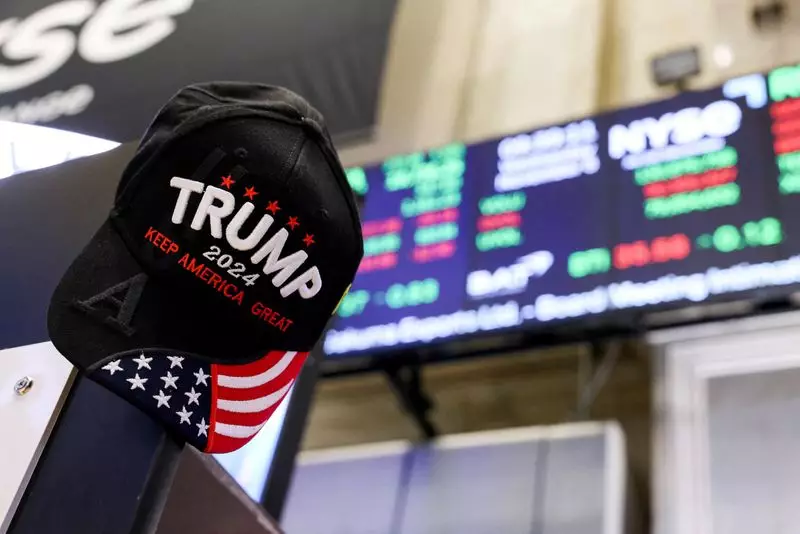As the U.S. stock market navigates through a turbulent economic environment, speculations surrounding President Donald Trump’s trade policies have intensified. Stock index futures for Wall Street showed a muted response as major indexes appeared poised to secure their second consecutive week of gains. Amidst fluctuating sentiments, investors remain cautious, with heightened awareness of tariff implications looming over the marketplace. This article aims to explore the multifaceted effects of trade policy uncertainty on stock market performance and investor psychology, while also delving into specific stock movements that have characterized recent trading sessions.
At the forefront of investor worries is the ambiguity surrounding potential tariffs, which President Trump has frequently addressed during various engagements. While Trump has hinted at forthcoming surcharges on trade partners such as Mexico, Canada, China, and the European Union, he has yet to delineate a comprehensive framework detailing the proposed tariffs. Speculation is rife, with many anticipating announcements as early as February 1. However, key analysts suggest that a substantial review of trade issues might push concrete plans to April 1. The looming specter of escalating tariffs has raised alarms about the prospects of a global trade war, which could exacerbate inflationary pressures and hinder the Federal Reserve’s capacity to implement interest rate cuts.
Mark Haefele, the chief investment officer at UBS, articulated concerns about the potential for tariffs to rise significantly, specifically forecasting a 30% effective tariff on China. Such forecasts are predicated on the assumption that retaliatory measures will be enacted by China, creating a cyclical pattern of economic strain that could stifle growth. The uncertainty surrounding these outcomes renders it increasingly difficult for investors to make informed decisions about their portfolios.
Despite these concerns, initial trading on Friday indicated modest decreases in benchmark index futures, suggesting a cautious wait-and-see approach from investors. The Dow E-minis were down 98 points, or 0.22%, while S&P 500 E-minis and Nasdaq 100 E-minis also registered slight declines. This hesitation can be attributed to recent highs achieved by the S&P 500, which saw its completion of a record-breaking session just the day before. The short-term outlook indicated that mixed earnings reports, alongside potential policy shifts announced at the World Economic Forum in Davos, could influence market direction.
In the premarket phase, some significant players showed distinct movements. Boeing, for instance, faltered by 1.6% after revealing predictive losses amounting to approximately $4 billion for the fourth quarter, which illustrates the rocky terrain the aerospace giant has been navigating. Additionally, Texas Instruments experienced a substantial 3.7% drop after projecting profits that fell short of analyst estimations.
Conversely, certain companies managed to report earnings that signaled prosperity, albeit with mixed market reactions. American Express revealed a noteworthy 12% profit surge in the fourth quarter, but its shares nevertheless fell by 2.6%. Furthermore, Verizon’s forecasts of free cash flow and adjusted profits below estimates further compounded investor unease, reflecting a broader trend of investor vigilance as the market adjusts to ongoing economic swings.
As this week progresses, the anticipation surrounding earnings reports from major technology companies—Microsoft, Meta, Apple, and Tesla—will play a pivotal role in shaping market sentiment. The outcome of these reports may inject a level of confidence or uncertainty into the marketplace that either upholds current momentum or precipitates a course correction. In addition, developments around trade policies and tariffs will continue to be a focal point for traders, potentially overshadowing other factors influencing stock performance.
While the U.S. stock market appears to be on a steady upward trajectory, the impending uncertainty around trade tariffs and corresponding policy adaptations creates a complex web of investor sentiment. As illustrated through recent stock performance and market reactions, the influence of governmental trade decisions cannot be overstated. Analysts and investors alike will need to remain agile and informed, as the evolving landscape of U.S. economic policy continues to shape the future of market dynamics.

